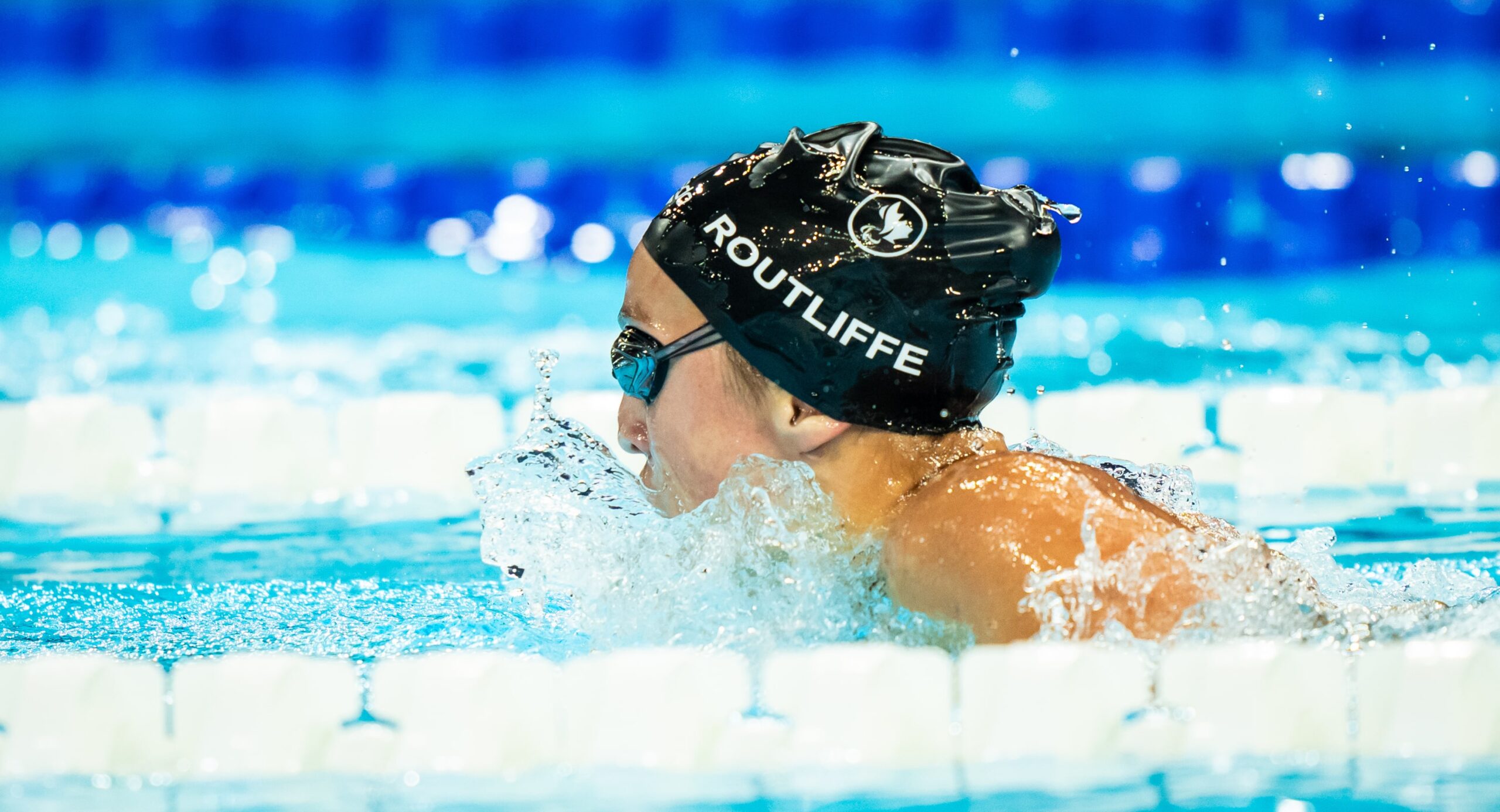
Para swimming
Summer Sports

Summer Sports
Para swimming features athletes with physical, visual, and intellectual impairments. Events are the freestyle, backstroke, breaststroke, butterfly, individual medley, and relays. A FINA (the international governing body for swimming) standard eight-lane 50-metre pool is required for competition at the Paralympic Games. Events are conducted in heats of eight competitors per class. The fastest eight swimmers per class compete in the finals.
Depending on their impairment, swimmers can start in the water, from a dive start sitting on the starting platform, or from the typical standing start. Blind and visually impaired swimmers are required to wear blackened goggles and have an assistant (called a “tapper”) to help (tap) them as they approach the pool end wall to make turns or finish the race.
Canada has enjoyed enormous international success in Para swimming. Tim McIsaac won 28 Paralympic medals in his career while Michael Edgson has 20. The now-retired Stephanie Dixon has 19 and in Rio 2016 Canadian Para swimmers brought home eight medals, including Benoit Huot’s 20th Paralympic medal.
The governing body is the IPC and the sport is also co-ordinated by the IPC Swimming Technical Committee, which uses FINA rules. Swimming Canada is the National Sport Federation.
Swimming combines various disabilities – such as limb loss, cerebral palsy, spinal cord injury and other disabilities across classes. There are14 classes in swimming:
Classes 1-10 are allocated to swimmers with a physical disability, Class 1 having the most involved disability and Class 10 the least involved, for example a partial hand amputation.
Classes 11-13 are allocated to swimmers with a visual impairment. Class 11 will have little or no vision; Class 12 can recognize the shape of a hand and have some ability to see; Class 13 will have greater vision than the other two classes but less than 20 degrees of vision.
Class 14 is allocated to swimmers with an intellectual disability.
The prefix ‘S’ denotes the class for Freestyle, Backstroke and Butterfly. The prefix ‘SB’ denotes the class for Breaststroke. The prefix ‘SM’ denotes the class for Individual Medley.
The classification system ranges from swimmers with a more involved (S1, SB1, SM1) to those with a less involved disability (S10, SB9, SM10). Swimmers may have a different classification for different strokes, depending on the way their disability affects the way they swim each of the specific strokes.
Within a single heat of a race and in any one class, some swimmers may start with a dive or in the water, an aspect which is also considered when athletes are classified.
6
4
3

Para swimming
1
1

Para swimming
1
1

Para swimming
2
1

Para swimming